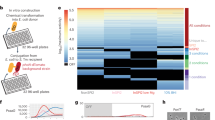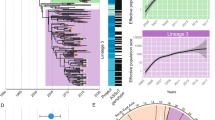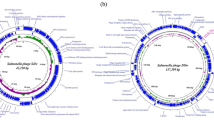Abstract
IT is known that the frequency of lysogenic response in a culture of Salmonella typhimurium strain LT2, infected with the temperate bacterio-phage P22, can be influenced by the ratio of phage to bacterium (multiplicity of infection)1–3, and by modifying the metabolism of the infected cells soon after infection, for example, by the addition of chloramphenicol4. With a high multiplicity of infection a high frequency of lysogenic response is obtained. Using a low multiplicity of infection a low lysogenic response results. If these infected cells are exposed to chloramphenicol (25 µgm./ml.) 5 min. after infection and the chloramphenicol removed by dilution 15 min. later, then practically every cell infected becomes lysogenic.
This is a preview of subscription content, access via your institution
Access options
Subscribe to this journal
Receive 51 print issues and online access
$199.00 per year
only $3.90 per issue
Buy this article
- Purchase on SpringerLink
- Instant access to full article PDF
Prices may be subject to local taxes which are calculated during checkout
Similar content being viewed by others
References
Boyd, J. S. K., J. Path. Bact., 63, 445 (1951).
Lwoff, A., Kaplan, A. S., and Ritz, E., Ann. Inst. Pasteur, 86, 127 (1954).
Levine, M., Virology, 3, 22 (1957).
Bertani, L. E., Virology, 4, 53 (1957).
Lanni, Y. T., Virology, 10, 501 (1960).
Author information
Authors and Affiliations
Rights and permissions
About this article
Cite this article
MOSELEY, B., GORRILL, R. An Effect of Early Dilution on the Establishment of Lysogeny in Salmonella typhimurium . Nature 188, 755 (1960). https://doi.org/10.1038/188755a0
Issue date:
DOI: https://doi.org/10.1038/188755a0



